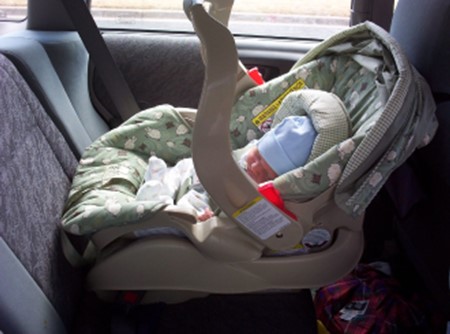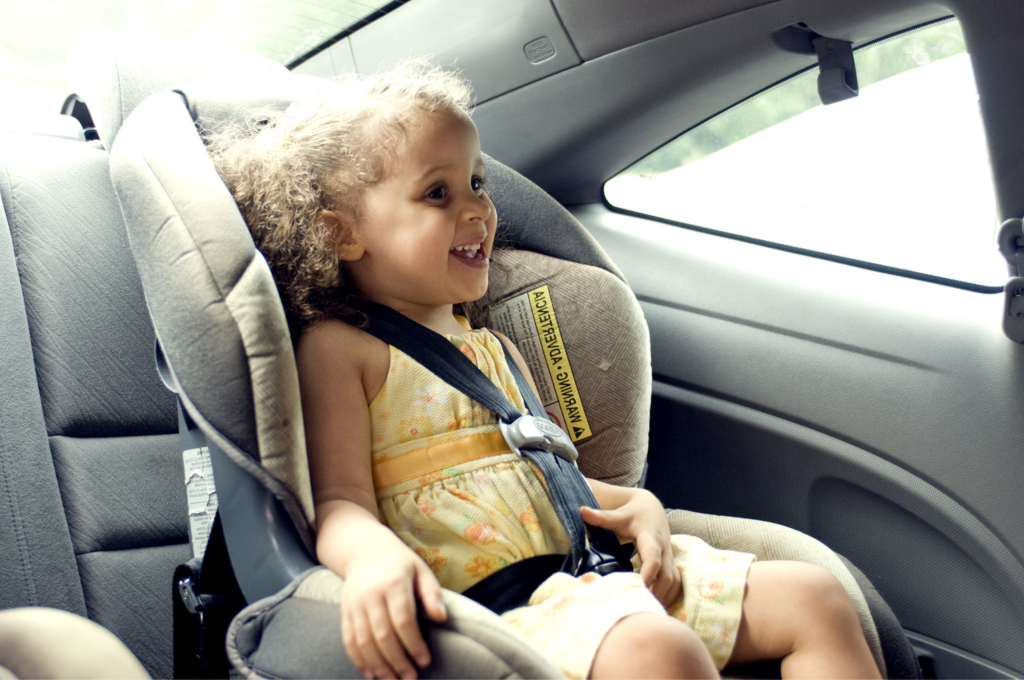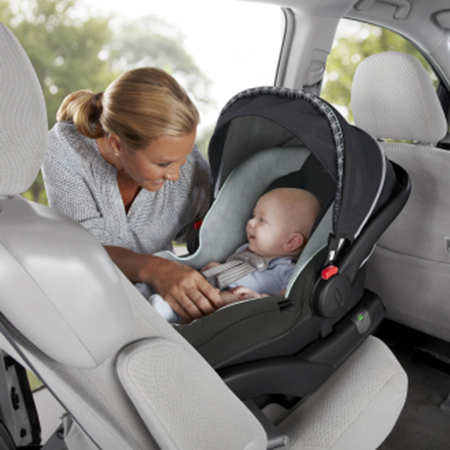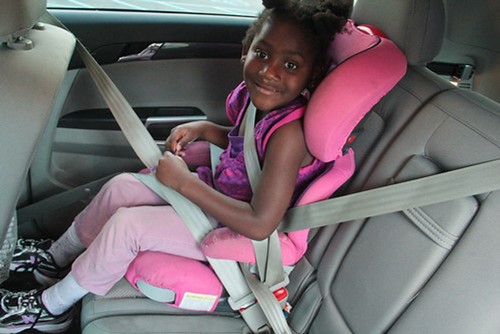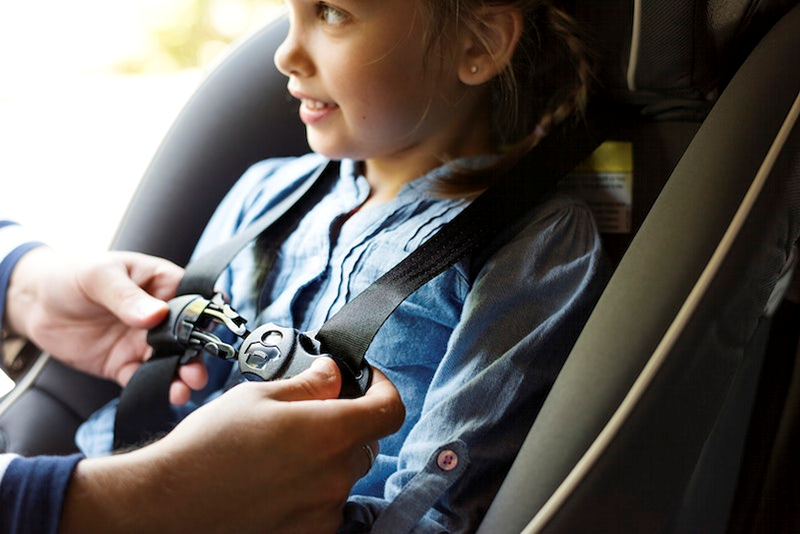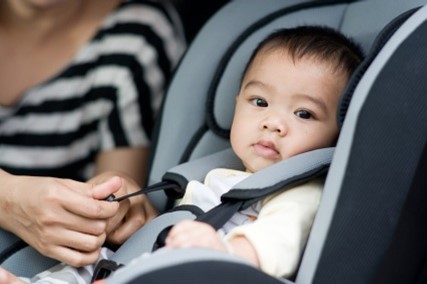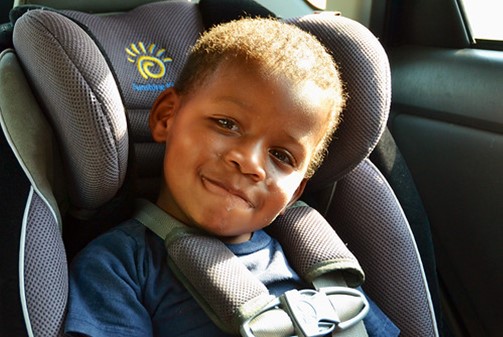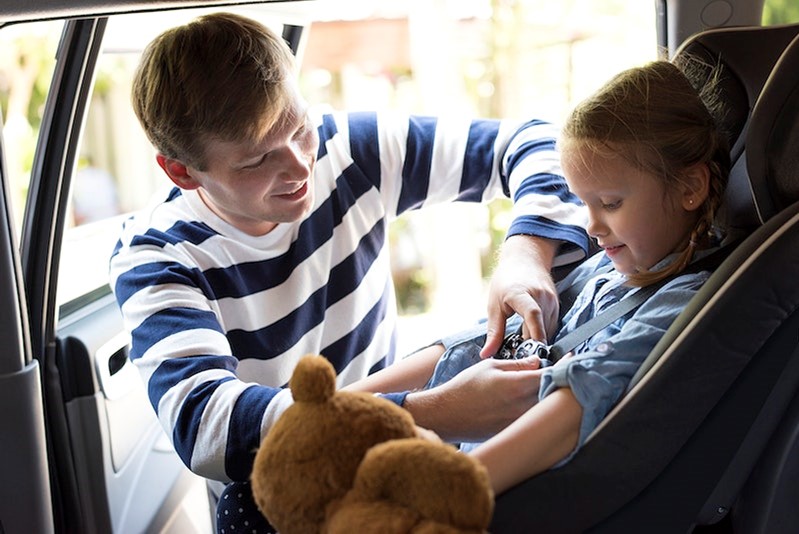A car seat is probably one of the most important (and expensive) purchases you make to keep your child safe when travelling. There are so many makes and models on the market it can be really difficult to know what is right for your child and car.
Why are car seats important?
A child car seat is a legal requirement. The law states that all children travelling in the front or rear seat of any car, van or goods vehicle must use the correct child car seat until they are either 135cm tall or 12 years old (which ever they reach first). After this they must use an adult seat belt. There are very few exceptions. It is the driver’s responsibility to ensure that children under the age of 14 years are restrained correctly in accordance with the law.
How do car seats work?
The main system for safely restraining occupants in vehicles is seatbelts. However, seatbelts do not fit children properly, and do not fit babies at all. This means they are less effective in protecting children, and in some circumstances, could even cause injury. Child car seats work by restraining children in the event of a collision. Children are not simply smaller adults; they are proportioned differently, their bones are not fully formed and their skeletal structure does not cover and protect their internal organs in the way it does in adults. A child’s neck and head needs greater support. All of these things change as children grow older, meaning that the type of restraint system they use also needs to change, until they reach the point where the seatbelts can provide the same protection as for adults.
Do car seats work?
Evidence suggests that car seats are very effective in preventing death and serious injury in children involved in collisions. A Swedish study found that rearward facing child seats reduced the likelihood of injury by 90% compared with being unrestrained. Forward facing seats that help to position the seat belt correctly reduced the risk of injury by 77% for 4 to 10 year old children.
Do car seats have expiration dates?
In the UK, car seats are not marked with an expiry date.
Many manufacturers recommend that you replace or upgrade your child car seats after five years, because child car seats are constantly being improved and upgraded. However some seats on the market are now suitable for children from birth up to 36kg and are therefore designed to last for a longer period of time. It is also recommended that you replace the seat if it is involved in a collision.
Before buying: what information will I need?
Although many car seat retailers will have trained staff who will be able to help you to choose a suitable seat, they will need to ask you a number of questions about your child and vehicle to be able to offer advice on appropriate car seats.
The questions that retailers are likely to ask include:
- What is the child’s weight?
- What is the child’s height?
- What is the child’s age?
- What vehicle(s) will the seat be used in?
- Does the vehicle(s) the seat will be used in have ISOFIX points?
- Does the vehicle(s) the seat will be used in have underfloor storage?
Before heading out to buy a car seat, fill in our handy child car seat buyer’s checklist to ensure that you have all of the information required to enable staff to help you to choose the right child car seat. If buying online it is really important to fill in the checklist and to read our how do I know that the seat fits my vehicle? information to ensure that the seat fits both the child and the vehicle.
Does your vehicle(s) have ISOFIX points?
ISOFIX provides a more secure and easier way of attaching child seats in cars.
Basically, fitting points are built into both cars and child car seats when they are manufactured. An ISOFIX car seat is ‘plugged’ into the corresponding fitting points in the car, removing the need to use the car’s seatbelts to secure it. An additional top tether or support leg is used to prevent the child seat tilting or rotating in an impact.
To find out if your car has ISOFIX points, look for ISOFIX labels between the base and back of your car seats (the fitting points themselves may also be visible) or check your vehicle’s handbook or contact the manufacturer or dealer.
If your vehicle does not have ISOFIX points, you will need to opt for a seat that can be fitted using the vehicle seatbelt.
Do you want your child to be rearward facing for as long as possible?
Babies need to be carried in rearward-facing baby seats. Rearward-facing seats provide greater protection for the baby’s head, neck and spine than forward-facing seats. However, many parents assume that their child will prefer facing forwards, and therefore allow them to travel facing forwards at the first opportunity.
Once the child has exceeded the maximum weight for their car seat, or they are too tall for it (their head is above the top of the seat), the child will need to move into the next stage of car seat. There are two options: the child can move into a forward facing car seat, or they can use what is known as an extended rearward facing car seat.
An extended rearward facing child car seat, is a seat that allows a child to travel rear facing for longer, typically up to around four years of age, or in some cases, up to around six years of age.
How do I know that the seat fits my vehicle?
Unfortunately, not all car seats will fit in all vehicles, and it is therefore very important to check compatibility before you buy. The best way to do this is to get a qualified car seat fitter to try a range of seats in your car.
Remember, if the seat will be used in other vehicles, you will need to ensure that it is compatible with all of the vehicles that it will be used in.
For information from manufacturers and retailers on whether a particular child car seat will fit in your vehicle and how you should install it, visit our car seat fitting and compatibility page on the Child Car Seats website.
Where should I place the car seat?
It is safer for your child to travel in the rear seats than the front. Never put a rearward-facing baby seat in the front if there is an active passenger airbag. It is illegal and dangerous to do so, because if the airbag goes off, it will hit the baby seat and fling it forward with considerable force.
If the middle rear seat has a three-point (lap and diagonal) seat belt, this is the safest place to put a child restraint (unless the manufacturer’s instructions say one of the other seats is better) because it is the furthest away from the sides of the car. If you are using an ISOFIX or I-Size child seat you can only use the middle rear seat if it has ISOFIX points.
If the seat cannot be fitted in the middle rear seat, it is better to fit it in the rear seat behind the front passenger. It is better to use this seat, than the one behind the driver, because it means you can normally get the child in and out of the car on the pavement side.



